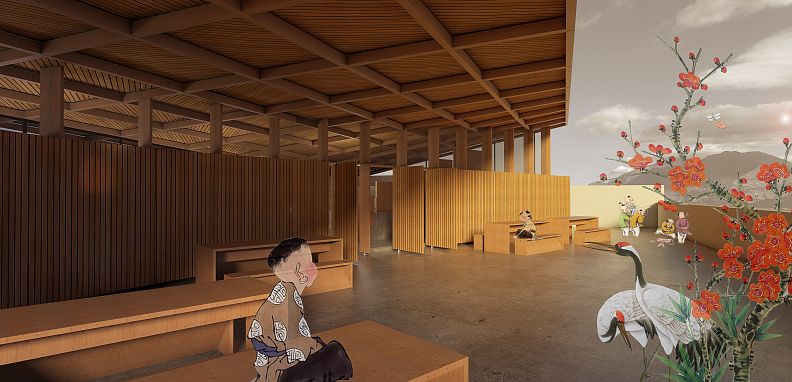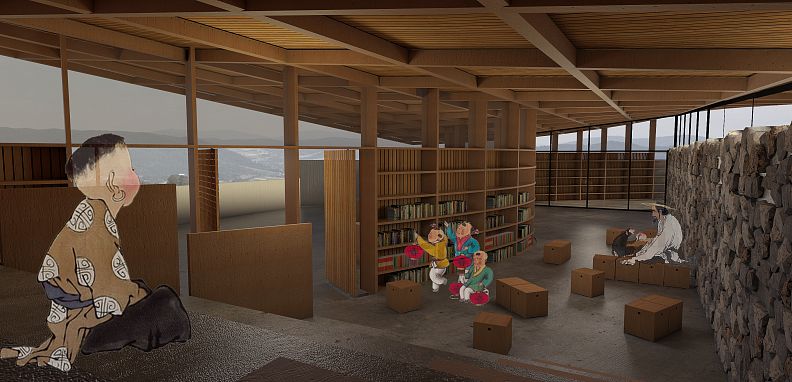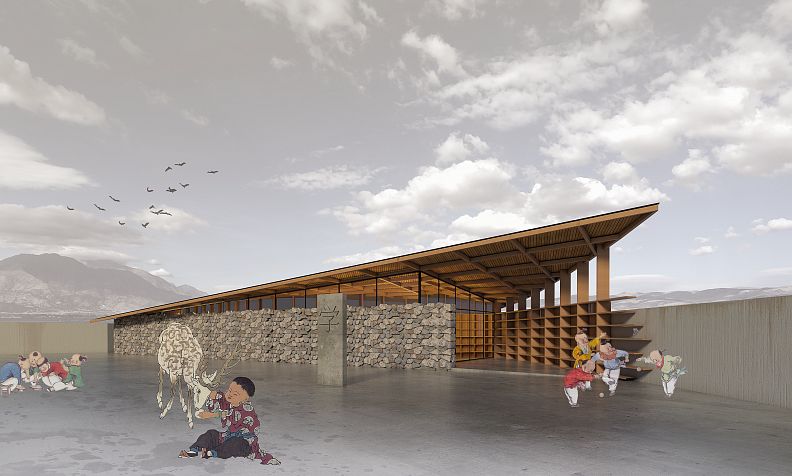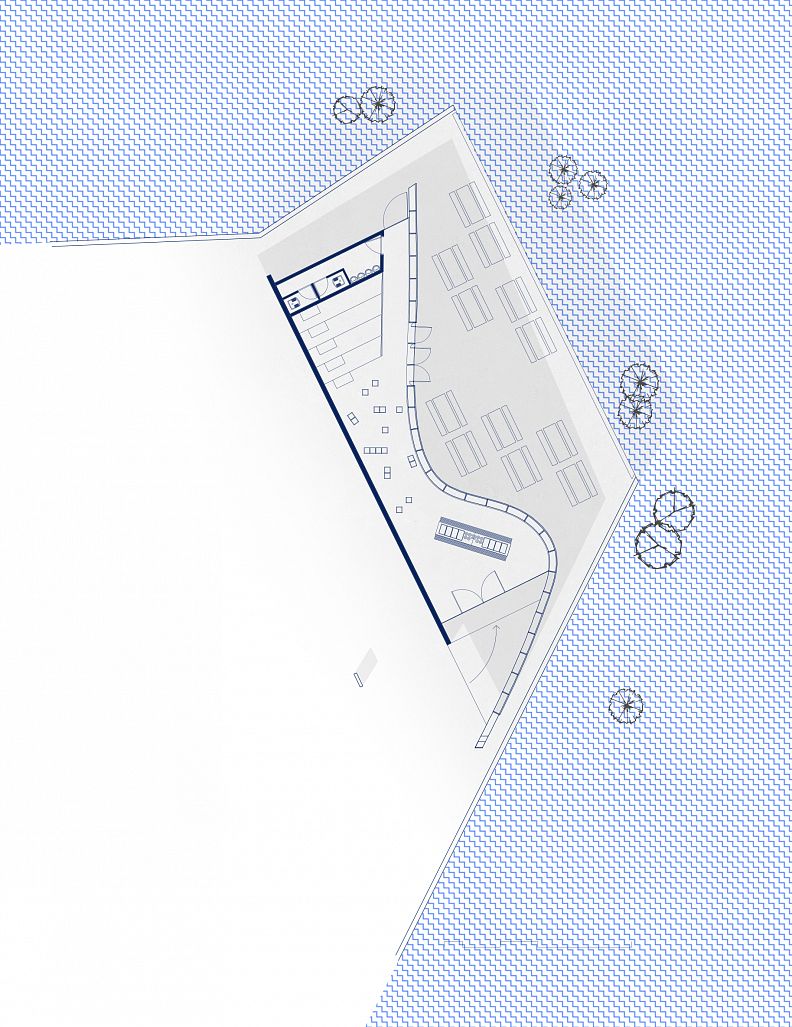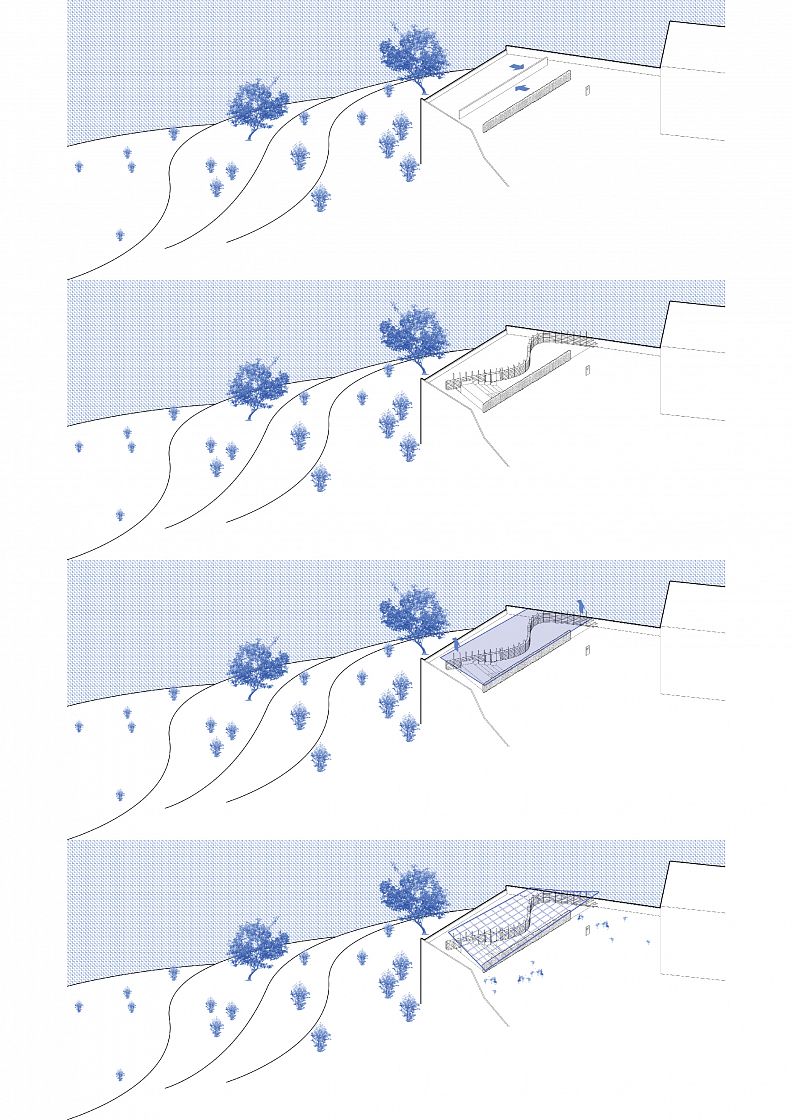The Way of the Buyi

Project idea
This is a flexible pavilion containing a library and a canteen in LiangMen School, located in Pu'An City, Guizhou province, China. It is the home to many Chinese folk, specially the Bouyei. By contrast, Guizhou has a diverse cultural background meanwhile it is still very underdeveloped. This learning space takes into account the rural vernacular environment as a potential mentor who is able to translate the special connection between who we are and where we are from.
Project description
Two walls are erected to be the foundation of all; at first sight, a heavy and strong telluric element. Slowly, the second wall incorporates the surroundings plasticity.
As the second wall accommodates the sinuous hills and welcomes the view with its permeable skin, it also holds the library books. Just like knowledge, this wall is supposed to be always growing.
A delicate membrane protects the set from the weather conditions. Inside, the library curves open space to the reading hill, a grandstand for ludic studies, creative lectures and recreational purposes.
The dichotomy between the telluric walls and the ethereal paraboloid emphasizes the symbolic story the pavilion tells.
Technical information
A large paraboloid with a timber structure covers two load-bearing walls: one made of stone, and the other made of wood.
Co-authors
Co-author: Pedro Ribs
